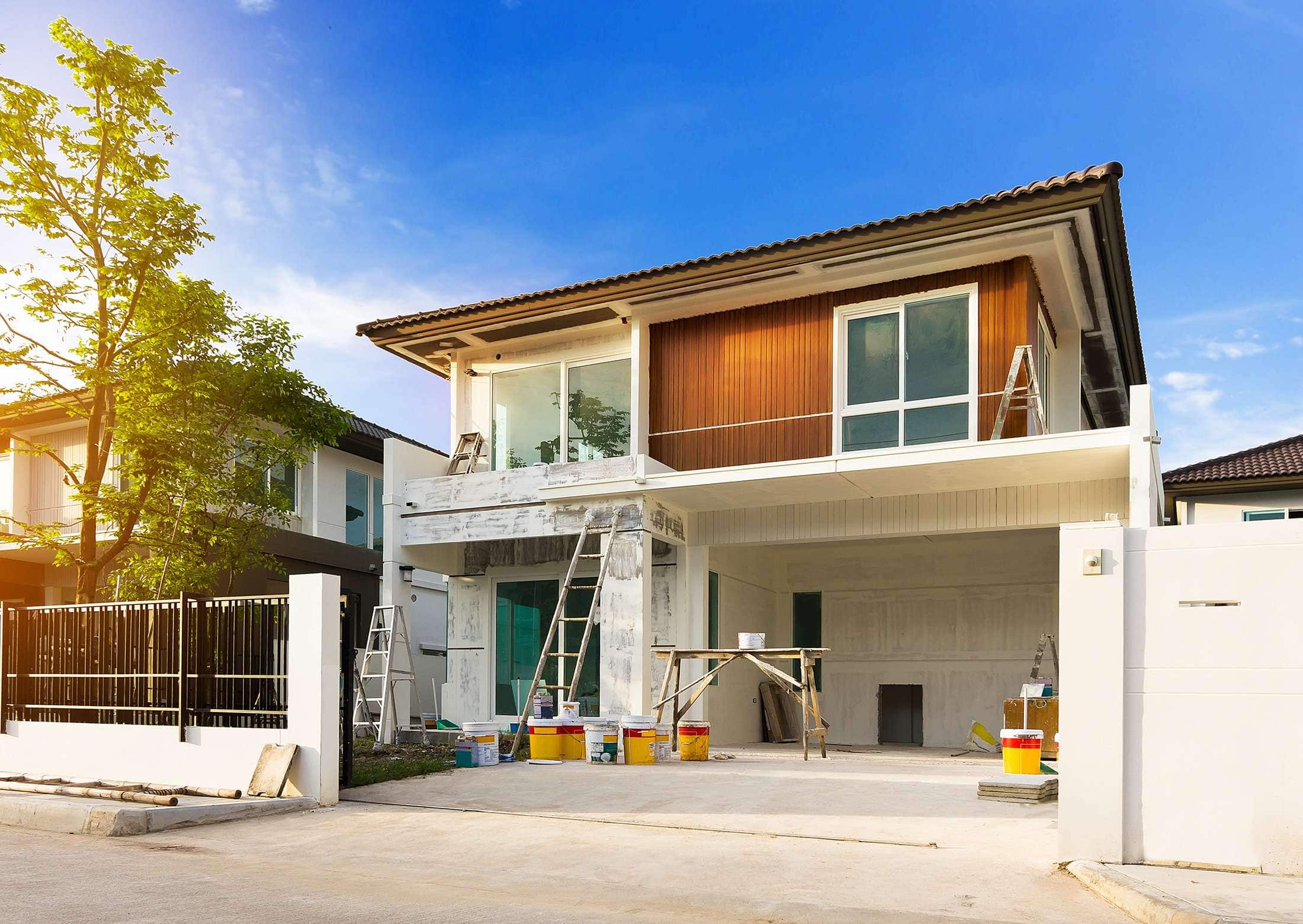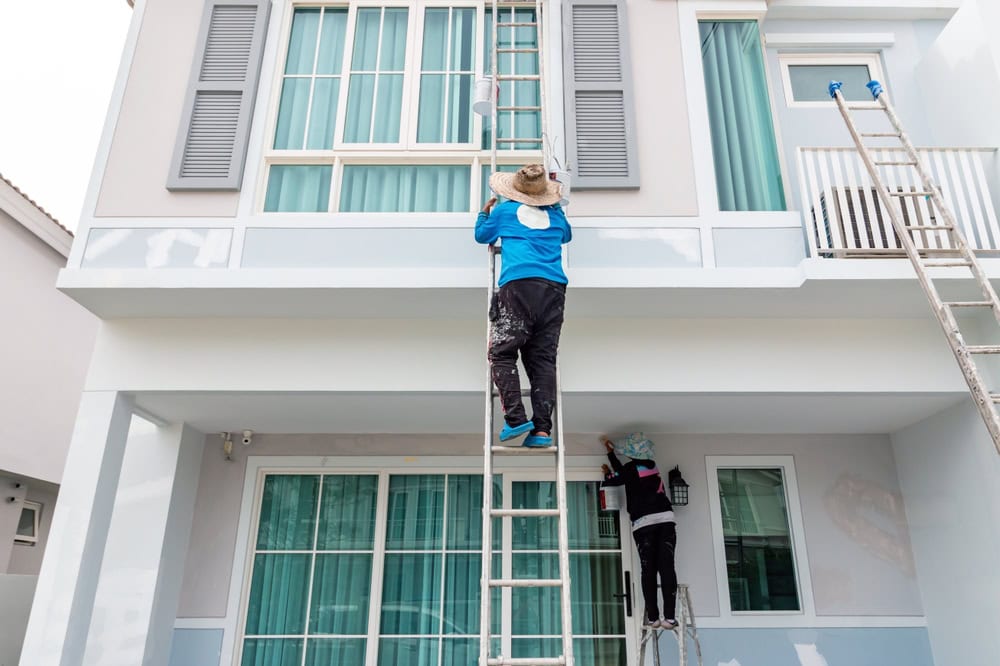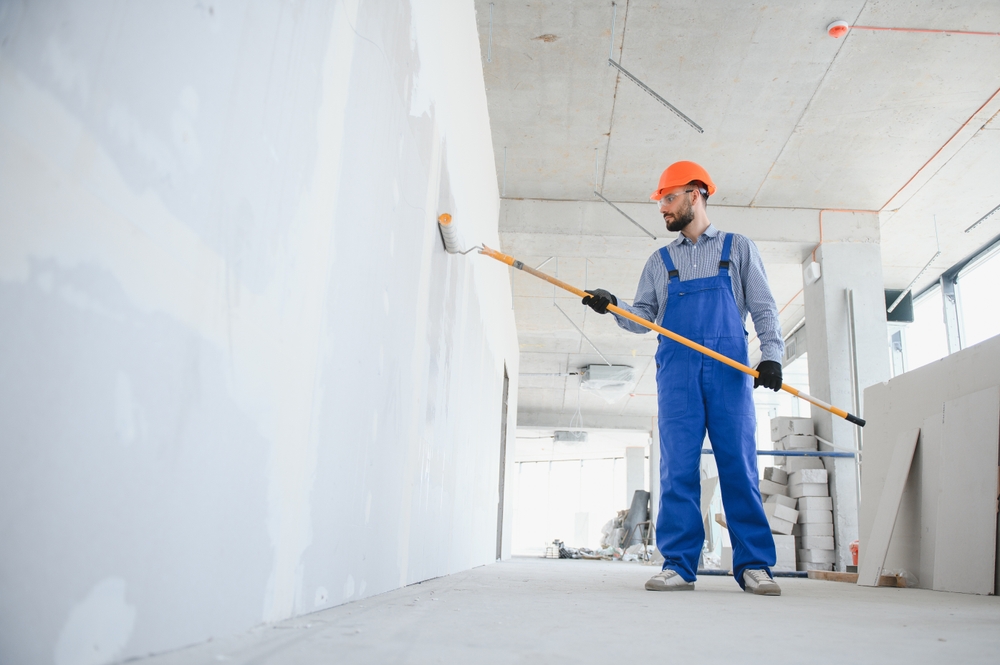Discover how professional exterior painting protects your Larimer County home from Colorado's intense UV rays while boosting curb appeal and property value.
Share:

Summary:
Colorado isn’t kind to exterior paint. At our elevation, your home absorbs significantly more UV light than houses at sea level—about 2% more for every 1,000 feet of altitude. That means your paint is getting hit harder than you might realize.
Fort Collins, with its relatively low rainfall, creates one of the more challenging environments for paint longevity on the Front Range. The combination of intense sun, dry air, and temperature extremes that can swing 40 degrees in a single day puts serious stress on any coating. This is why you’ll see paint jobs that look worn after just a few years when they should last much longer.

Understanding what’s happening to your paint helps you make better decisions. UV light breaks down paint at the molecular level, attacking both the pigments that give you color and the polymers that hold everything together. You’ll first notice this as fading, especially on walls that face south or southwest.
But fading is just the beginning. As UV rays continue their assault, the paint binders start breaking down, creating that chalky residue you might have noticed when you run your hand along the siding. This chalking isn’t just cosmetic—it’s a sign that your paint is losing its ability to protect the surface underneath.
The final stage is when the paint starts losing adhesion entirely. Cracking, peeling, and flaking follow, leaving your siding exposed to moisture, insects, and further UV damage. What started as a cosmetic issue becomes a real threat to your home’s structure and value.
This process happens faster in Colorado than almost anywhere else in the country. While coastal homes might get 7-10 years from a quality paint job, Colorado homeowners often see deterioration beginning in 3-5 years with standard approaches.
Not all exterior paints are created equal, especially in Colorado’s climate. The difference between a paint job that lasts 3 years and one that protects for 8-10 years often comes down to the specific products and application methods used.
High-quality acrylic latex paints with UV-resistant formulations are your best bet for longevity. These paints contain special additives that help them maintain flexibility as temperatures fluctuate and resist the molecular breakdown that UV light causes. Brands like Sherwin-Williams and Benjamin Moore offer specific lines designed for high-altitude, high-UV environments like ours.
Color choice matters more than you might think. Darker colors absorb more heat and tend to fade faster, while lighter colors reflect UV rays and typically last longer. This doesn’t mean you’re stuck with white or beige—many mid-tone colors perform well if you choose the right formulation.
The application process is just as critical as the paint itself. Proper surface preparation, including thorough cleaning, scraping loose paint, filling cracks, and priming bare surfaces, creates the foundation that allows premium paint to perform as designed. Shortcuts in prep work will undermine even the best paint, leading to premature failure and costly do-overs.
Want live answers?
Connect with a LF Rosa Painting expert for fast, friendly support.
Professional exterior painting goes far beyond rolling paint onto siding. The process starts with a thorough assessment of your home’s current condition, identifying problem areas that need attention before any paint touches the surface.
Proper preparation typically takes as much time as the actual painting. This includes power washing to remove dirt and chalky residue, scraping loose or failing paint, caulking gaps and cracks, and priming any bare surfaces or stains. These steps aren’t optional—they’re what separate a paint job that lasts from one that fails within a few years.

Surface preparation is where many painting projects succeed or fail. In Colorado’s climate, this step becomes even more critical because our weather conditions are so hard on paint and the underlying surfaces.
The process starts with a thorough inspection of all exterior surfaces. We look for signs of moisture damage, wood rot, loose caulking, and areas where previous paint is failing. These issues must be addressed before new paint can be applied successfully.
Power washing removes dirt, pollen, and chalky paint residue that would prevent new paint from adhering properly. However, this needs to be done carefully—too much pressure can damage siding or force water into areas where it doesn’t belong. The surface then needs adequate time to dry completely before painting begins.
Scraping and sanding remove loose, flaking paint and smooth rough areas. Any bare wood or metal gets primed with products specifically designed for those surfaces. Cracks and gaps get filled and caulked to prevent water infiltration. This preparation work isn’t glamorous, but it’s what allows your paint job to withstand Colorado’s weather extremes for years to come.
How paint gets applied matters tremendously in our climate. We understand that Colorado’s dry air, intense sun, and temperature fluctuations require specific techniques to ensure proper adhesion and curing.
Timing is everything. Paint applied during the heat of the day can dry too quickly, preventing proper adhesion and leading to brush marks or lap lines. Early morning or late afternoon application often works best, avoiding both the intense midday sun and the rapid temperature drops that can occur in the evening.
Multiple thin coats perform better than fewer thick ones, especially in our climate. This allows each coat to cure properly and creates a more flexible, durable finish that can handle temperature swings without cracking. Most professional jobs include at least two coats of paint over primer, with additional coats on surfaces that take more abuse.
Weather monitoring becomes crucial during the painting process. Even a brief afternoon thunderstorm can ruin freshly applied paint, so we track weather patterns carefully and adjust schedules accordingly. This might extend your project timeline slightly, but it ensures results that will protect your home for years.
The right painting contractor makes all the difference between a successful project and a costly mistake. Look for contractors with specific experience in Colorado’s climate challenges, proper licensing and insurance, and a track record of satisfied customers in your area.
Ask about their preparation process in detail. Contractors who skip or rush through surface prep are setting you up for premature paint failure. The best contractors will spend significant time on preparation and be able to explain exactly what they’re doing and why.
Get multiple detailed estimates, but remember that the lowest price often signals corners being cut somewhere. Quality materials, proper preparation, and skilled application cost more upfront but save money over time by lasting longer and requiring fewer touch-ups. When you’re ready to protect your home with professional exterior painting, we bring the experience and attention to detail that Larimer County homeowners have trusted for over 15 years.
Article details:
Share:
Continue learning: